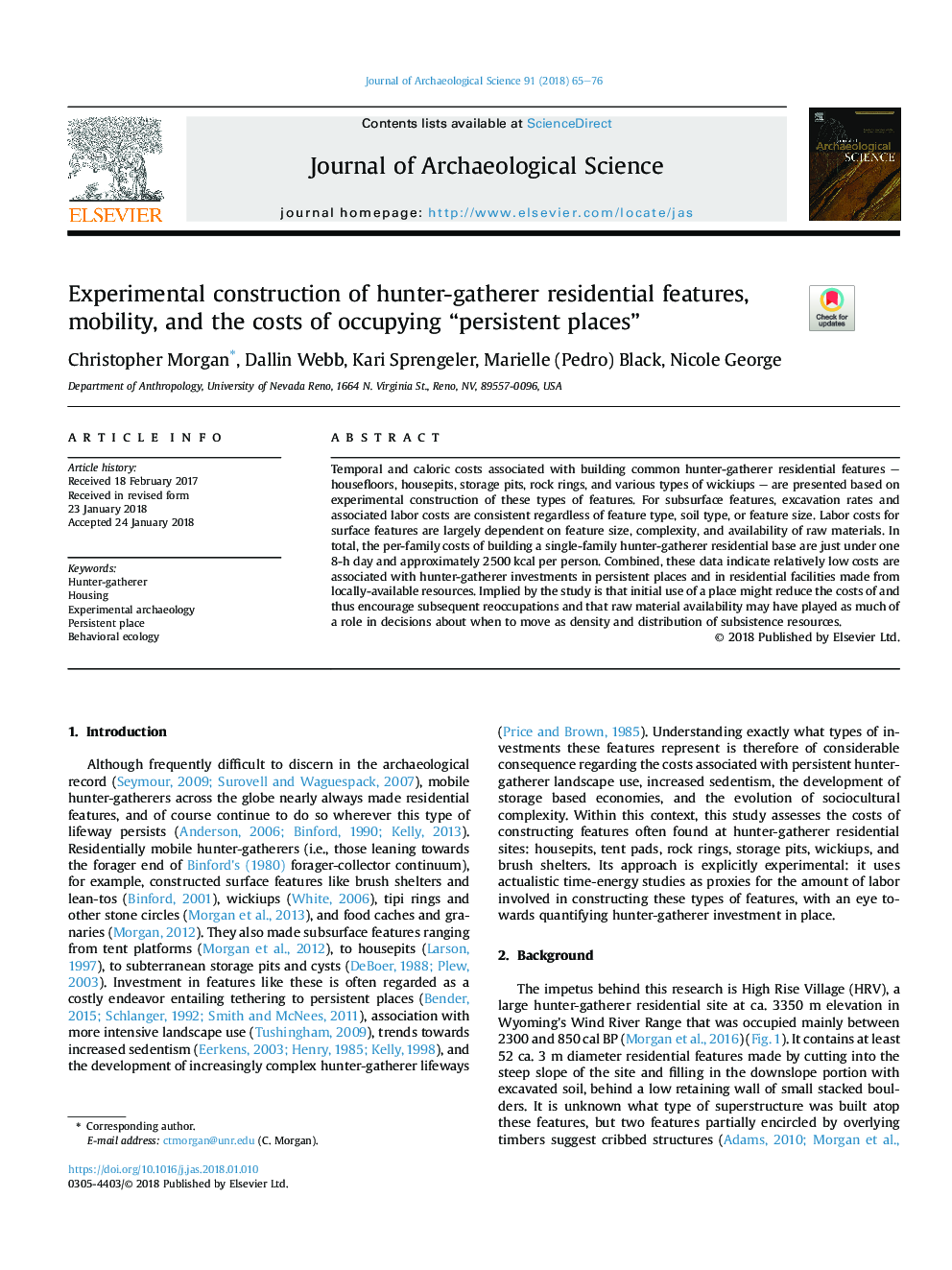| Article ID | Journal | Published Year | Pages | File Type |
|---|---|---|---|---|
| 7441051 | Journal of Archaeological Science | 2018 | 12 Pages |
Abstract
Temporal and caloric costs associated with building common hunter-gatherer residential features - housefloors, housepits, storage pits, rock rings, and various types of wickiups - are presented based on experimental construction of these types of features. For subsurface features, excavation rates and associated labor costs are consistent regardless of feature type, soil type, or feature size. Labor costs for surface features are largely dependent on feature size, complexity, and availability of raw materials. In total, the per-family costs of building a single-family hunter-gatherer residential base are just under one 8-h day and approximately 2500â¯kcal per person. Combined, these data indicate relatively low costs are associated with hunter-gatherer investments in persistent places and in residential facilities made from locally-available resources. Implied by the study is that initial use of a place might reduce the costs of and thus encourage subsequent reoccupations and that raw material availability may have played as much of a role in decisions about when to move as density and distribution of subsistence resources.
Related Topics
Physical Sciences and Engineering
Materials Science
Materials Science (General)
Authors
Christopher Morgan, Dallin Webb, Kari Sprengeler, Marielle (Pedro) Black, Nicole George,
